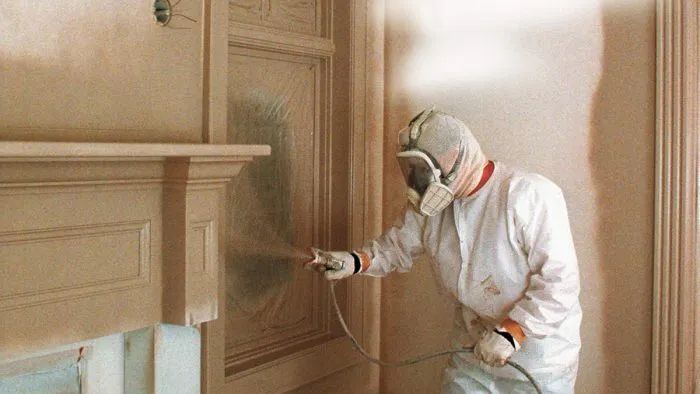Is Clay Eco Friendly?
Clay is a naturally occurring material composed primarily of fine-grained minerals like silica and alumina. It is a key ingredient in many products like pottery, bricks, and ceramics. Eco-friendly refers to something that has a minimal negative impact on the environment. When determining if something is eco-friendly, one must look at factors like energy use, pollution, and sustainability from start to finish across its entire lifecycle. This includes how raw materials are obtained, how a product is manufactured, what it’s made of, how it’s packaged and transported, how it’s used, and how it’s disposed of. The purpose of this article is to explore the eco-friendliness of clay, analyzing its composition, production process, usage, disposal, and overall sustainability.
Clay Production Process
Clay is extracted from the earth through open pit mining or underground mining. Open pit mining involves scraping off surface layers with heavy machinery to access clay deposits. This can disrupt local ecosystems and wildlife habitats. Underground mining tunnels into clay seams and brings material to the surface. This has less visible impact but can destabilize land above mines.
Once extracted, raw clay goes through extensive processing to remove impurities and achieve desired properties. It is crushed, screened, washed, filtered, mixed with other materials, and treated with heat. This requires large amounts of water and energy. Water used in clay processing can become contaminated with mineral particles and chemicals. Wastewater must be treated before release into the environment.
Clay processing facilities utilize heavy machinery running on fossil fuels. This emits greenhouse gases. Facilities also generate waste sludge that must be managed properly to avoid polluting land and water. With careful practices and pollution controls, the environmental impact of processing can be reduced.
Clay Composition
Clay is composed primarily of fine-grained minerals such as kaolinite, montmorillonite-smectite, illite, and chlorite. The exact mineral composition can vary based on the type of clay. Most clays contain some amounts of quartz, feldspar, carbonates, iron oxides, and organic matter as well.
In terms of toxic materials, clays do not contain any ingredients that are acutely hazardous. However, some clays contain trace amounts of naturally occurring heavy metals like lead, arsenic, mercury, and cadmium. The levels are generally quite low and not a significant exposure risk for most uses of clay. Any potential toxins are naturally occurring elements intrinsic to the clay itself, rather than synthetic additives.
Clays marketed as “natural” or “unprocessed” do not go through refinement steps to remove impurities, so may have higher levels of heavy metals than highly processed clays. Overall though, clay is generally considered a non-toxic material when used properly.
Clay Packaging
Clay products often come packaged in cardboard boxes, plastic bags or other single-use containers. This packaging helps protect the clay during transportation and storage, but ultimately ends up in landfills.
Some eco-conscious clay companies are shifting towards more sustainable packaging options. For example, recycled cardboard or paper packaging that can be easily recycled again. Reusable containers made of durable materials like wood, metal or plastic are also an option. The containers can be returned and reused in a closed-loop system.
Ideally, clay packaging should be recyclable, reusable or compostable. Avoiding excess packaging materials in the first place is also beneficial. Consumers can also help by reusing clay product containers for storage or other purposes when possible.
Clay Transportation
The transportation of clay can have environmental impacts due to emissions from fuel usage. Clay is often transported long distances via truck, train or ship from the mining site to the manufacturing facility and then again to distributors or retailers.
Trucks transporting clay release emissions including carbon dioxide, nitrogen oxides and particulate matter. Transportation by rail also produces emissions, though rail transport is generally more efficient per ton of freight than trucking. Ocean freight via cargo ships produces emissions as well, though modern shipping vessels are implementing more energy efficiency measures to reduce emissions.
The fuel usage and emissions from clay transportation depend on the modes of transport used and the distances traveled. Local or regional transportation has a lower impact than long-distance transport. Using more carbon-efficient transportation modes like rail or ship can mitigate emissions versus trucking. Overall, efficient logistics planning to minimize shipping distances as well as using low or zero-emission transport can reduce the carbon footprint of moving clay to markets.
Clay Usage
Clay is used in a variety of ways in modern society. Some of the most common uses of clay include:
- Pottery – Clay is shaped and fired to create bowls, plates, cups, vases and other decorative or functional pottery items.
- Construction Materials – Bricks, tiles and piping are often made from clay due to its durability and heat resistance.
- Absorption – Clay is used for its absorbent properties in cat litter, oil absorbent pads and facial masks.
- Medicine – Kaolin clay is used in some medicines, both internally and topically, due to its absorbent properties.
- Cosmetics – Clay is a common ingredient in soaps, masks and other beauty products as both an absorbent and an exfoliant.
While clay itself is not hazardous, there are some dangers and waste products created through its usage:
- Firing clay pottery and bricks can generate air pollution and carbon emissions unless clean practices are followed.
- Clay extraction can contaminate water and disrupt ecosystems if not properly regulated.
- Products containing clay typically generate non-biodegradable solid waste when disposed.
- Clay dust inhalation can potentially cause respiratory issues for workers.
Overall, with thoughtful practices, clay usage can be made quite eco-friendly. But there are risks of pollution, emissions and waste that should be monitored and mitigated.
Clay Disposal
When clay products reach the end of their usable life, their disposal has minimal impact on the environment. Unlike plastics and other non-biodegradable materials, clay is naturally occurring and can break down over time through natural processes.
The majority of clay products, such as pottery, dishes, bricks, and tiles, are made by firing or baking the clay at high temperatures. This process permanently hardens the clay into a ceramic material that cannot easily break down. However, when crushed and buried in a landfill, ceramic clay can slowly decompose over many years. The clay’s mineral components will gradually break apart and return to the earth.
For unfired clay items, such as modeling clay, the biodegradability is much faster. Unfired clay has not undergone the chemical changes from high heat that makes ceramic clay so durable. When discarded, unfired clay can begin deteriorating within weeks or months. It will break down through erosion from rain, wind, temperature changes, and other environmental factors.
Overall, clay’s biodegradable properties make it one of the more environmentally friendly art and construction materials, especially compared to plastic. With responsible usage and disposal, clay can be a sustainable choice for many different applications.
Clay Mining Impact
Clay mining can have significant environmental impacts if not managed responsibly. The extraction process often involves clearing trees and vegetation, removing topsoil, and digging large open pits in the earth. This major disruption damages local ecosystems and wildlife habitats.
Noise and dust from heavy machinery and explosions used to expose clay deposits can create pollution that impacts nearby communities. Erosion of mining pits and tailing ponds leads to sediment runoff that can pollute rivers, streams, and groundwater.
The large pits that remain after clay is extracted fill with water and can leach minerals into water sources. This changes the chemistry and temperature of the water, harming aquatic life. Pits can also drain water resources from surrounding areas.
Restoring mined land by refilling pits and replanting vegetation can be difficult and expensive. The biodiversity and productivity of reclaimed land is often less than before mining occurred. Responsible mining operators take steps to minimize long-term environmental damage, but extraction inherently disrupts local environments.
Greener Clay Alternatives
There are some more eco-friendly options for artists and consumers looking to minimize the environmental impact of clay. Here is an overview of some of the greener alternatives to conventional clay on the market:
Recycled Clay – Some ceramics companies are now offering recycled clay made from discarded unfired clay scraps or fired shards. Recycling clay reduces waste and the need for new clay mining.
Low-Firing Clays – Clays that fire at lower temperatures consume less energy in the kiln firing process. Look for cone 06-04 low-fire clays as a greener option.
Local Clays – Using locally-sourced clays reduces the emissions from long distance transportation. Supporting local clay harvesters also benefits local economies.
Organic Clays – Though not common, some companies offer clay harvested from certified organic lands without chemical processing or synthetic additives.
Alternative Materials – While not true clay, some ceramic artists use sustainable earthen materials like unfired earth, paper clay, or clay substitutes made from recycled materials.
Conscious Consumption – Consider if clay is essential for your project. Using minimal clay and firing intentionally helps reduce consumption and waste.
Conclusion
While clay has some eco-friendly properties like being a natural material, the mining, production, packaging, transportation, and disposal of clay products can have negative environmental impacts. Clay mining can lead to deforestation, habitat destruction, soil erosion, and water pollution. The high temperatures required to fire clay also consume a lot of energy. However, there are ways the clay industry can improve sustainability, such as:
- Using renewable energy sources like solar or wind power for production
- Recycling water used in manufacturing
- Finding alternative packaging materials instead of plastics
- Using local clay sources to reduce transportation emissions
- Composting or recycling fired clay products instead of landfilling
While clay may not be 100% eco-friendly, manufacturers and consumers can take steps to reduce its environmental footprint through more sustainable mining practices, energy efficiency, and waste reduction.





